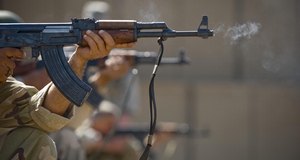The Turkish-Kurdish Conflict in Theory and Practice
By
2014, Vol. 6 No. 03 | pg. 1/3 | »
IN THIS ARTICLE
KEYWORDS
Like the theories that explain it, group conflict has existed since man became a social creature. Nevertheless, social scientists remain frustrated in their attempts to explain ethnic conflict in any generalizable pattern. Social political theories that detail the “why” of conflict often fail to illustrate “how” to resolve it. Regarding the Turkish-Kurdish conflict, a plethora of theories exist to try and explain it, including Social Identity Theory (and under it, Stereotyping and Prejudice Theory), Basic Human Needs Theory (and under it, Relative Deprivation Theory), Realistic Conflict Theory and Psychodynamic and Psychocultural Theories. Numerous articles have considered the “Kurdish Question” from these theoretical perspectives, yet very few have attempted to draw a connection between theory and the active practice of peacebuilding, bringing to attention the problematic gap between understanding and action. A Brief History of the Kurdish ConflictGenerally agreed by scholars of all fields is that the “Kurdish question is the main source of political instability in Turkey today” (Ozcelik, 2006, pg. 1). As of 2009, the death toll in Turkey, related to the conflict, had reached 30,000 and the cost estimate was $6-8 billion per year (James and Ozdamar, pg. 25). The Kurdish conflict transcends borders because the ethnic Kurdish people do. The Kurdish people, who researchers believe are descended from the Medes, are primarily Sunni Muslim, however there are representative Christian and Jewish minorities as well (Ozcelik, pg.1-2). Of the 25 million Kurds today, about 14 million live in Turkey. The nations with the next largest Kurdish populations are Iran, Iraq and Syria (with around 2-3 million), but Turkey and Syria, as unfriendly neighbors, have experienced the most conflict (James/Ozdamar, pg. 24). Dr. Mesut Yegen, a Turkish scholar and professor outlines several evolutionary stages of the conflict:
Some of these stages will be explained below in further detail relating to identity, but it is important to note that, according to Yegen, causes and effects of this conflict transcend the domestic realm, making it a relevant internationalized case to study (2006, pgs. 121-141). As James and Ozdamar put it, “internationally, Turkey’s foreign policy at both the global and regional level has been affected substantially” (2009, pg. 25).
Overview from a political perspective From a political outlook, the “Kurdish question” is characterized as being both a foreign policy deterrent and security dilemma for the Turks. Those who have studied the issue identify (political) elements of terrorism, bleak economic stratification and human rights abuses. For example, Ozcelik mentions that internationally, the Kurdish dilemma generates tension between Turkey’s neighbors, like Syria, and has inhibited Turkey from being accepted into the EU (2006, pg. 1). One of the main impediments to their acceptance to the EU is the existence of the Kurdish terrorist organization, the PKK (Kurdistan Workers Party) (Ozcelik, 2006, pg. 3). Scholars believe that Turkey has not yet qualified for the EU because of the fairly recent human rights abuses witnessed during the military-PKK conflict of 1984. The significance of a Human Rights narrative that was already on the rise in the early 1990s became internationally relevant during this deadly conflict and is still fresh in the minds of the Kurds and international community alike (Yegen, 2006, pg. 136). The Kurdish conflict, which started even before the creation of the Turkish Republic in 1923 (Ozcelik, 2006, pg. 1) can be considered a security dilemma, domestically and internationally, because it meets Shiping Tang’s “spiral model” requirements: anarchy, self-help toward security, fear and then power competition (Tang, 2011, pg. 515). Power competition is exemplified today through the PKK and Turkish military’s use of fear-mongering tactics (domestic) and by Syria’s support of this Kurdish terrorist organization (international) (Ozcelik, 2006, pg. 5). Kurdish discontent, as W.W Isajiw states, should also be considered from a historical economic paradigm (2000, pg. 118). James and Ozdamar describe the underlying tension between Syria and Turkey as economic competition (2009, pg. 23) and Ozcelik iterates that past rapid urbanization resulted in poor and insecure living conditions for millions of Turkish Kurds (2006, pg. 5). Overview from a psychological perspective Scholars have more recently studied the Kurdish dilemma from the psychological perspectives of the ethnic minority group (Kurds) and ethnic majority group (Turks). Historically speaking, BHN (basic human needs) began to be stripped from the Kurds when the Ottoman Empire began to decline in 1913. Their autonomy and basic rights of language, religion and physical security were stripped from them by a non-inclusive Turkish regime that desired centralization (Yegen, 2006, pg. 122). Ozcelik claims, though, that the Turks also have a Basic Human “non-negotiable need:” security (2006, pg. 4). This BHN has been jeopardized over the years by what the Turks perceive as a lack of political loyalty on the part of the Kurdish groups (Yegen, 2006, pg. 123). Ted Gurr asserts in his idea of Relative Deprivation (RD) that there is a “perceived discrepancy between ‘value expectations’ (VE) (resources to which one feels entitled) and ‘value capabilities’ (VC) (resources one feels capable of acquiring and keeping)” (Ozcelik, 2006, pg. 5). By using Gurr’s RD perspective, Sezai Ozcelik points out that we can better understand the dissatisfaction of the Turkish-Kurds who have witnessed an increase of poverty in the south in accordance with an increase of economic development in the west (2006, pg.5).Yet, underlying all of these causal factors are the basic ideas of identity and perceptions of reality.Continued on Next Page » Suggested Reading from Inquiries Journal
Inquiries Journal provides undergraduate and graduate students around the world a platform for the wide dissemination of academic work over a range of core disciplines. Representing the work of students from hundreds of institutions around the globe, Inquiries Journal's large database of academic articles is completely free. Learn more | Blog | Submit Latest in International Affairs |



















